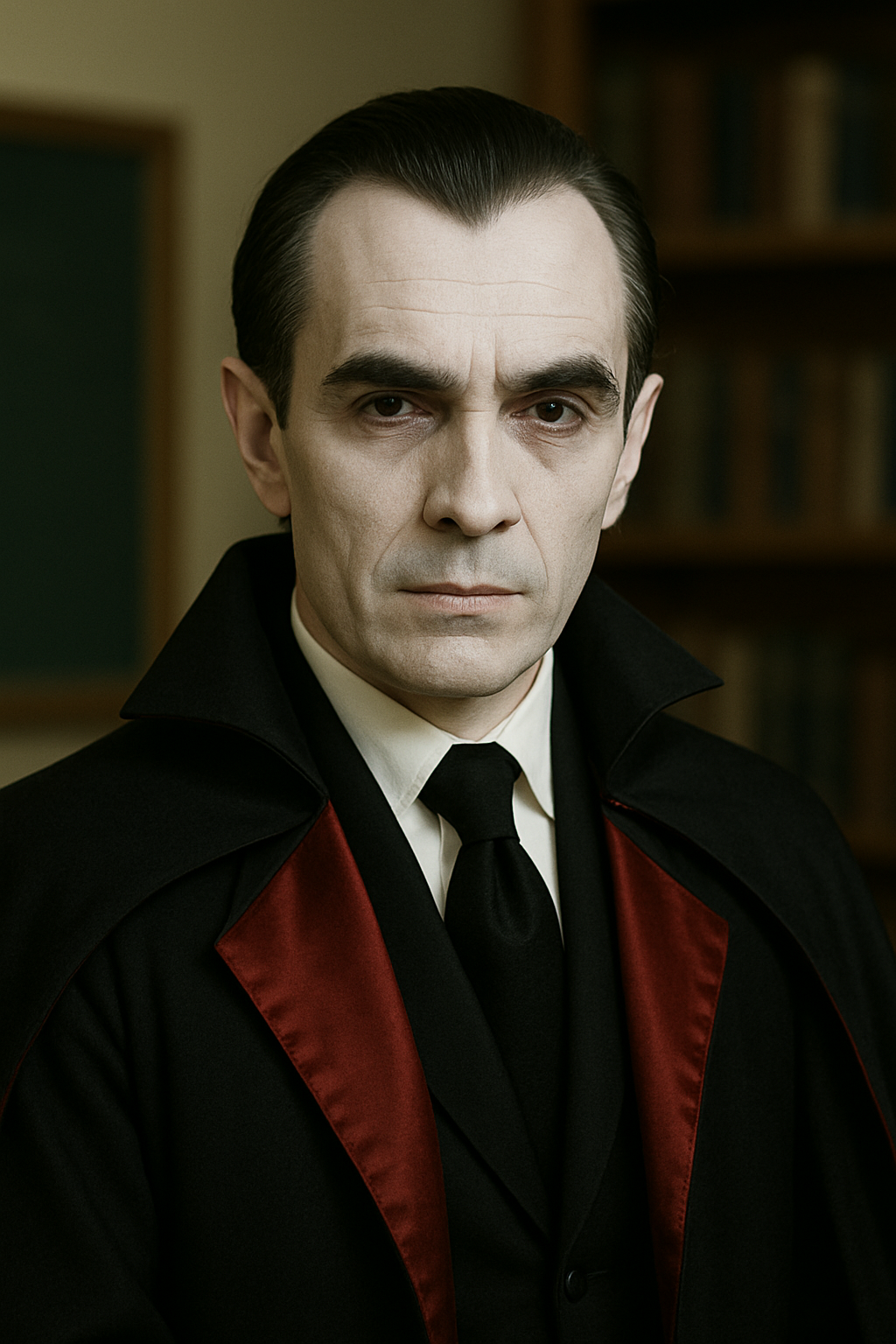Latest Articles
ABSTRACT
The odontogenic keratocyst (OKC) accounts for approximately 3% to 11% of all odontogenic cysts and is characterized by aggressive behavior, significant growth potential, and a high recurrence rate, prompting the exploration of more effective and conservative adjuvant therapies. This report describes the clinical management of a case treated with surgical enucleation and topical application of 5-fluorouracil (5-FU), an antimetabolite widely used in oncology and dermatology, whose application has been extrapolated to the treatment of OKCs due to molecular similarities in their pathophysiology. A 66-year-old female patient with an odontogenic keratocyst in the right mandibular ramus was treated by enucleation and placement of a gauze dressing impregnated with 5% 5-FU. After 15 months of clinical and radiographic follow-up, a favorable outcome was observed, with adequate bone regeneration and no evidence of recurrence. This case adds to the growing body of evidence supporting the use of 5-FU as an effective, minimally invasive therapeutic alternative for odontogenic keratocysts.
ABSTRACT
The immediate complete denture is an accepted method of restoration for the patient whose last remaining teeth are to be removed. The prosthesis is fabricated before the removal of the teeth and is inserted immediately following the extractions. It is used to enhance esthetics, protect the extraction wound and provide function during the healing period. However, this prosthetic act remains very difficult to perfect as it presents several difficulties in managing all clinical stages. The presence of poorly positioned teeth, always moving is the main problem that complicates all prosthetic steps and that all other problems are connected. The aim of this paper is to present clinical and laboratory procedures required for the construction of an immediate complete maxillary denture with good retention, support, stability, and aesthetic result. The present case reports the clinical and technical steps in completing an immediate complete denture.
Original Research Article
ABSTRACT
Dentistry exposes practitioners to numerous occupational hazards affecting both physical and mental health. This cross-sectional study aimed to assess the prevalence of occupational diseases among Tunisian dentists. In 2024, an online survey was conducted among 105 dentists, collecting data on demographics, professional practice, and health status. Results showed that musculoskeletal disorders were the most frequently reported (76.9%), followed by psychological disorders (60.6%), sleep disturbances (37.5%), biological accidents (17.3%), hearing disorders (13.5%), and respiratory conditions (7.7%). Despite these risks, only 57.4% of participants reported adopting preventive measures, and 28.6% sought formal recognition of occupational diseases. The findings highlight a wide range of work-related health issues, with ergonomic strain, mental stress, and exposure to biological hazards as major contributing factors. These results underscore the need for greater awareness, systematic preventive strategies, and coordinated occupational health interventions to protect dentists’ well-being and ensure sustainable professional practice.
Original Research Article
Dental Care for Hearing Impaired Children in Sudan: Assessing Caregivers' Knowledge, Attitudes, Practices, and Children's Oral Health Status
Alaa Ibrahim, Motaz S Abdelrahman, Mohamed Elkhalifa Ahmed, Ashraf Fadul, Mohaned Mohammed, Hagir Mahmoud, Elaf Mohammed
EAS J Dent Oral Med; 2025, 7(5): 204-212
https://doi.org/10.36349/easjdom.2025.v07i05.004
Abstract
PDF
FULL TEXT
E-PUB
216 Downloads | Oct. 27, 2025
ABSTRACT
Aim: This study aimed to assess the oral health status of hearing-impaired children and evaluate the knowledge, attitudes, and practices of their caregivers in Khartoum State, Sudan. Methods: A descriptive cross-sectional study was conducted among 202 hearing-impaired children aged 6-16 years from three branches of Al-Amal schools. Data were collected using a pre-tested, self-administered questionnaire completed by caregivers, assessing their knowledge, attitudes, and practices regarding oral health. Clinical examinations were conducted to evaluate the children’s oral health status using the DMFT/dmft indices, the Community Periodontal Index of Treatment Needs (CPITN), and the Simplified Oral Hygiene Index (S-OHI). Data were analyzed using SPSS version 24, with chi-square tests, ANOVA, t-tests, and Pearson correlation applied, setting the significance level at P ≤ 0.05. Results: The prevalence of dental caries was 81.3%, with an average DMFT score of 0.0962 and a dmft score of 0.0632. Most participants (60.1%) had fair oral hygiene, while periodontal health assessments using CPITN revealed significant treatment needs.
Original Research Article
ABSTRACT
Teeth periodontitis is an infectious disease leading to loosening of surrounding supporting structures, these surrounding tissues are connected to pulp tissue through apical foramen. The aim of this study is to evaluate the pulp health status clinically using pulse oximeter in sound periodontally compromised teeth. Sixty teeth are the experiments were divided into 3 groups, 20 teeth for each group as follows: moderate periodontitis, severe periodontitis and advanced periodontitis. The Pulp oxygen saturation level was 86.7, 84.2 and 78,8 moderate periodontitis, severe periodontitis and advanced periodontitis respectively. According to these results there is a direct proportion between decreased oxygen saturation level of pulp tissue and the severity of periodontitis.
ABSTRACT
The integration of artificial intelligence with digital dentistry represents a transformative shift in contemporary oral healthcare. Over the past two decades, digital technologies such as intraoral scanning, cone-beam computed tomography, computer-aided design/computer-aided manufacturing, and 3D printing have revolutionized diagnostics, treatment planning, and prosthetic fabrication. Parallel advancements in AI, particularly machine learning and deep learning, have expanded dentistry’s potential for enhanced diagnostic precision, predictive analytics, and personalized care. This review provides a comprehensive overview of AI applications across major dental specialties, including caries detection, orthodontic planning, prosthodontic design, implantology, endodontics, periodontology, and forensic odontology. Further, the paper highlights synergies between AI and digital workflows such as intraoral scanning, 3D printing, and tele-dentistry, underscoring their role in improving efficiency, reducing chairside time, and enhancing patient outcomes. While AI offers significant benefits, challenges related to data privacy, standardization, accessibility, and clinician acceptance remain barriers to widespread adoption. Future directions emphasize integration with robotics, predictive analytics, cloud-based platforms, and robust ethical frameworks to ensure equitable, evidence-based practice. Collectively, AI is poised to serve as a collaborative partner in dentistry, augmenting clinician expertise and driving the transition toward a predictive, preventive, and patient-centered model of care.
Review Article
Oral Health as a Window to Systemic Disease: Pathophysiology, Diagnostics, and Clinical Implications
Dr. Eva Chauhan, Dr. Samreen Shaguftha, Dr. Bhavani Sukka, Dr. Surabhi Sakchhi, Dr Manjiri Chakor, Dr Islam Abdelaziz Mohamed Eweis, Dr. Sandeep Singh
EAS J Dent Oral Med; 2025, 7(5): 183-191
https://doi.org/10.36349/easjdom.2025.v07i05.001
Abstract
PDF
FULL TEXT
E-PUB
1279 Downloads | Sept. 2, 2025
ABSTRACT
Emerging evidence over the past decades has elucidated the complex interplay between oral health and systemic diseases, highlighting periodontal disease as a pivotal contributor to a range of chronic conditions such as cardiovascular disease, diabetes mellitus, adverse pregnancy outcomes, and neurodegenerative disorders. This review synthesizes current knowledge on the pathophysiological mechanisms linking oral and systemic health, including chronic inflammation, microbial translocation, and biomarker expression. It further explores the diagnostic potential of salivary biomarkers and advances in non-invasive technologies, emphasizing their roles in early detection and disease monitoring. The importance of interdisciplinary collaboration between dental and medical professionals, integrated health records, and addressing healthcare disparities are discussed to improve patient outcomes. Challenges such as confounding factors, limited longitudinal studies, and gaps in establishing causality are acknowledged. Finally, future directions focusing on artificial intelligence, precision diagnostics, and policy integration are proposed to strengthen the oral–systemic healthcare paradigm.


















